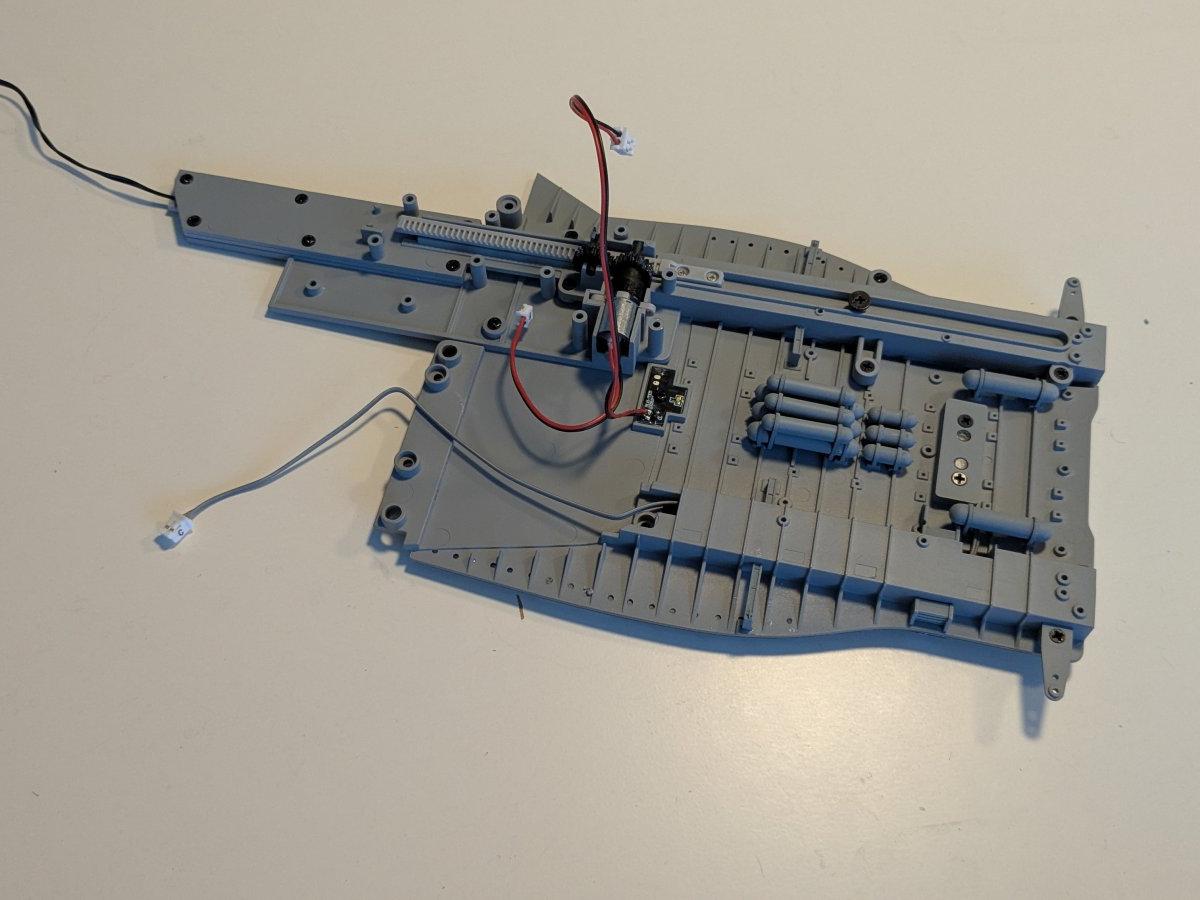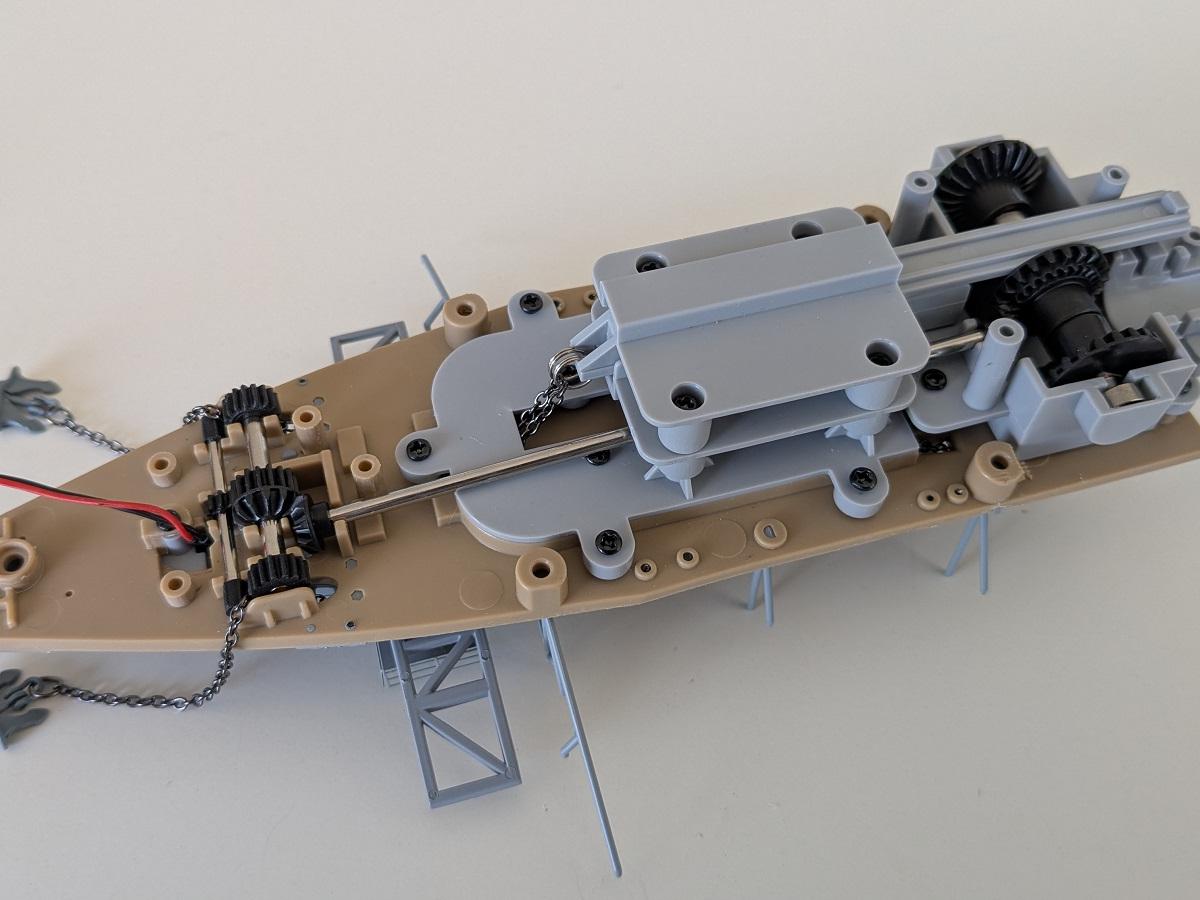In this phase of the Graf Zeppelin build, work transitions from the internal mechanical systems to the ship’s external structure. The anchor mechanism is completed and tested, marking the end of the early internal assembly stages. Construction then focuses on the hull, where multiple sections are fitted to form the bow, followed by the installation of a large keel piece that adds significant rigidity to the forward structure.
Once the hull is stabilized, assembly of the flight deck begins. The deck features a combination of plastic and wooden elements, reinforced with adhesive for durability, and includes numerous small details and photo-etched components. Lighting is introduced for the first time, with LEDs installed for both internal illumination and future signal lighting on the deck.
These steps collectively mark the transition from the foundational framework to the visible superstructure of the carrier.

